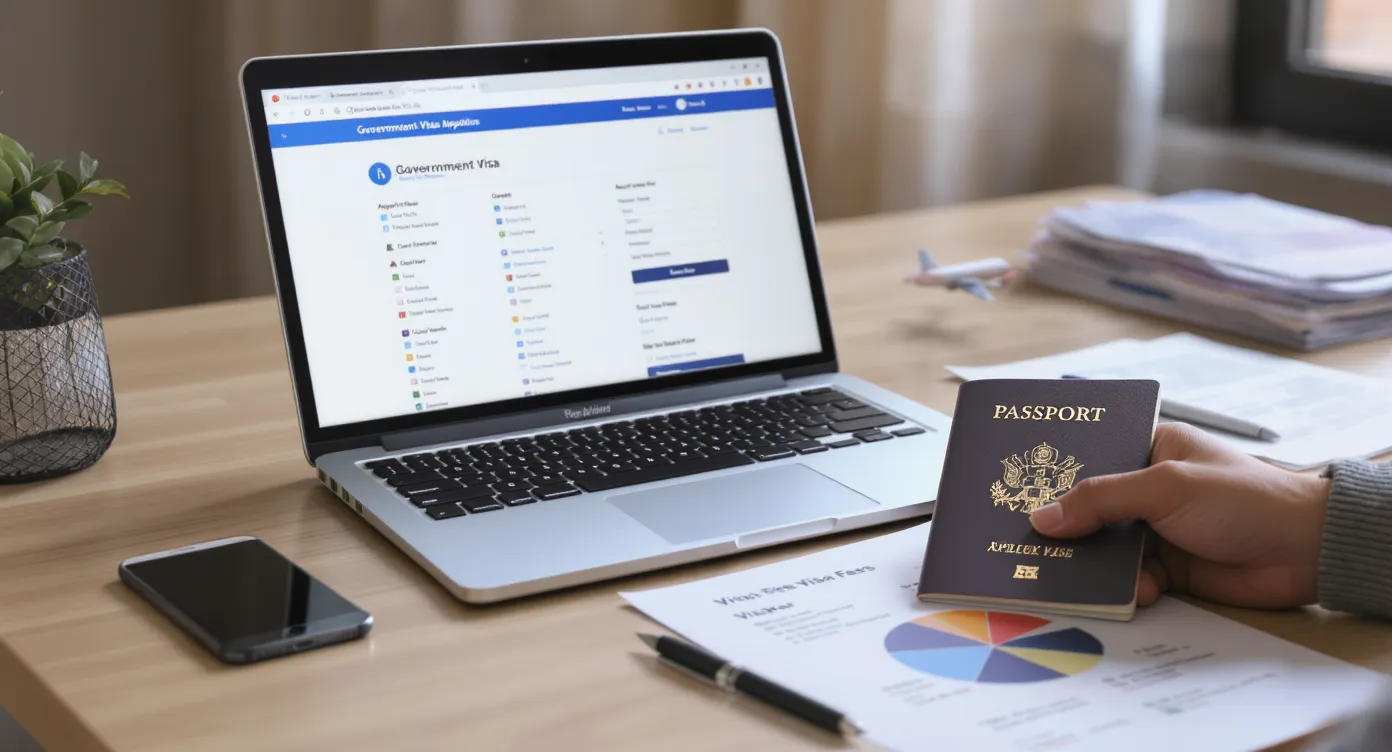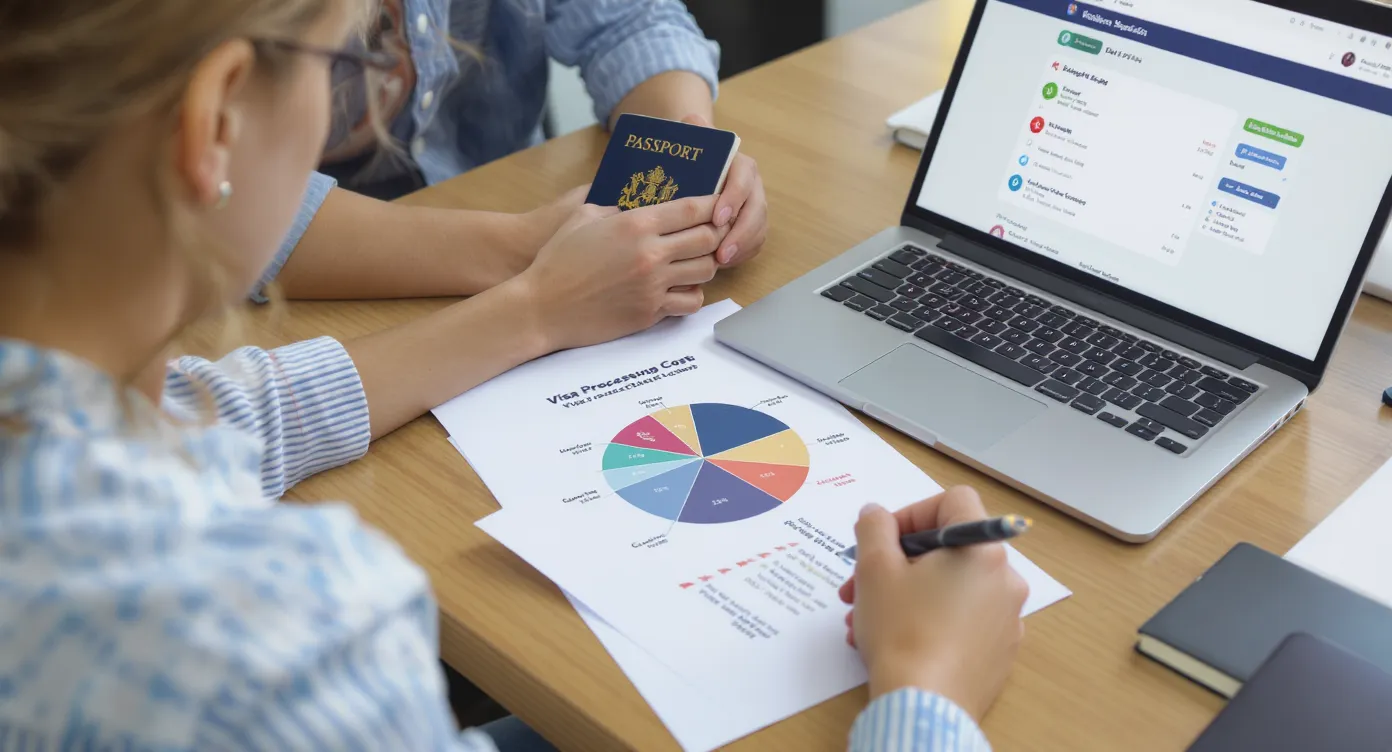Visa Processing Fee Explained: What You’re Paying For

International travel rarely comes free of paperwork—and paperwork rarely comes free of charge. Whether you apply at an embassy, submit a fully online e-Visa, or use a travel agency, you will almost always be asked to pay a visa processing fee. But what exactly are you buying? Below is a practical look at where those dollars (or euros, or pesos) actually go, why the amount differs from traveller to traveller, and how to keep costs under control.
What Is a Visa Processing Fee?
A visa processing fee is the amount an applicant must pay for a government or authorised provider to accept, screen, and decide on a visa application. Unlike a security deposit or airfare, this fee is non-refundable—even if the application is denied—because resources are consumed during processing.
While many governments publish a single headline figure, the “fee” is usually a bundle of smaller cost components, some mandatory and some optional. Understanding that bundle helps travellers budget accurately and spot unnecessary add-ons.
Why Governments Charge Application Fees
- Administrative costs: Embassies and consulates need staff, secure data centres, call centres, and in some cases overseas contract workers to verify documents.
- Security screening: Applications are checked against watch lists, criminal databases, and travel histories; these checks require specialised software and inter-agency coordination.
- Reciprocity or diplomatic balance: Some countries levy a reciprocity charge equal to what their citizens pay to enter the applicant’s home country.
- Infrastructure investment: Digital platforms, biometric equipment, and upgraded border systems must be funded somehow. Fees provide a predictable revenue stream.
According to the US Department of State, 48 percent of its consular fees are reinvested in modernising visa and passport systems.¹
The Fee Breakdown at a Glance
| Fee Component | Mandatory? | Typical Range (USD) | What It Covers |
|---|---|---|---|
| Base application fee | Yes | 20–190 | Form intake, document imaging, initial security checks |
| Biometric fee (fingerprints/photo) | Often | 5–30 | Biometric capture hardware, database storage, staff time |
| Reciprocity / issuance fee | Sometimes | 0–300 | Charged if the applicant's home country charges similar fees |
| Convenience or service fee | Varies | 5–30 | Online payment gateway, out-of-hours support, SMS/email alerts |
| Courier or return postage | Optional in many e-Visa regimes | 10–40 | Passport shipping, tracking, secure envelopes |
| Expedited or priority fee | Optional | 50–250 | 24- to 72-hour processing, overtime staffing |
Figures based on published 2025 rates for Australia ETA, India e-Visa, US B1/B2, and Schengen national visas.
Factors That Influence Your Total Cost
-
Nationality and reciprocity
- Example: A US citizen applying for a Turkish e-Visa pays about 61 USD, while a Mexican citizen pays roughly 45 USD.
-
Visa type and length of stay
- Single-entry tourist visas are often cheaper than multi-year, multiple-entry business visas.
-
Application channel
- Applying through an authorised partner like SimpleVisa may include a small service fee, but it can save on courier charges and hidden resubmission costs caused by errors.
-
Processing speed
- Many e-Visa systems now offer “super-rush” decisions in under 24 hours for an added fee. If you apply early, you can skip the premium.
-
Currency and exchange rates
- Fees published in a foreign currency may fluctuate daily. Always double-check the amount in your bank’s billing currency.
Hidden or Easily Overlooked Costs
- Passport photos: Digital vs. printed; embassy kiosks often charge double the online rate.
- Document translation or notarisation: Required for work or study visas in some jurisdictions.
- Medical exams or insurance: Certain long-stay visas mandate health checks or minimum coverage levels.
- Travel to an embassy: Transport, accommodation, or lost wages if an in-person interview is needed.
If you are budgeting a multi-country trip, our in-depth e-Visa processing guide has a worksheet to capture every potential cost line.
How to Verify the Official Fee and Avoid Scams
- Use the government’s fee table: Most immigration portals list current fees in local currency along with credit-card surcharges.
- Cross-check domain names: Genuine government URLs often end in .gov or the country’s official subdomain. Our post on e-Visa scams shows red flags to watch for.
- Ask for a receipt: Whether you pay online or at a bank counter, a receipt with an application reference number is standard practice.
- Beware of “guaranteed approval” upsells: No legitimate provider can guarantee a visa. Screening decisions remain the government’s prerogative.
Tips to Minimise Out-of-Pocket Fees
- Apply well in advance. This eliminates the need for expensive priority channels.
- Submit flawless documents the first time. Resubmissions incur new fees. See our visa application checklist to get it right.
- Leverage digital submission. Opt for e-Visa platforms that store the visa electronically and remove courier fees.
- Bundle services when it makes sense. Some travellers pay separate vendors for photos, translations, and status SMS alerts. Providers like SimpleVisa incorporate these into a single transparent price.
- Monitor exchange rates. If you hold a multi-currency card, pay in the billing currency to avoid double conversion.

How SimpleVisa Keeps Costs Transparent
SimpleVisa’s platform is built to eliminate the “guesswork surcharge.” When you start a visa application through our API, embedded widget, or white-label portal, the total government fee and the SimpleVisa service fee are displayed upfront in your preferred currency. No surprise charges appear at the payment screen. For travel businesses that integrate our solution, the same cost clarity applies to your customers—helping you build trust and drive ancillary revenue without hidden mark-ups.
Need priority processing? The system shows the government’s exact express surcharge before you choose it. Prefer standard speed? You simply uncheck the option. It is that straightforward.
Frequently Asked Questions
Is the processing fee the same as the visa fee? Not always. Some governments separate an issuance or reciprocity fee from the base processing fee. Both can appear on your receipt.
Do I get a refund if my visa is denied? No. Processing fees cover the work already performed. Refunds are extremely rare.
Can I pay one fee for my entire family? It depends on the destination. Many e-Visa portals require a separate transaction per passport, though SimpleVisa lets you complete multiple applications in one payment session to reduce card charges.
Why did my friend pay less for the same visa? Differences in nationality, fee updates, exchange rates, or optional services (like express processing) can all shift the total.
Are service fees legitimate? Yes—provided they are clearly separated from government charges and reflect real value (error checking, status alerts, 24/7 support). Hidden mark-ups are a red flag.
Ready for Total Fee Transparency?
Whether you are a traveller eager to avoid sticker shock or a travel brand looking to embed clear, compliant visa pricing inside your booking flow, SimpleVisa can help. Start an application, request an API key, or book a five-minute demo to see how we turn complex fee tables into a single, trustworthy price.
Travel made simple—fees included.
¹ US Department of State, “Budget Justification Fiscal Year 2025 – Consular and Border Security Programs,” accessed October 25 2025.